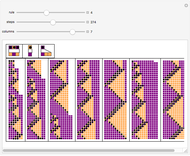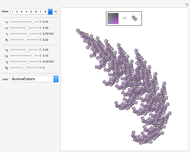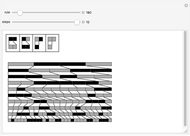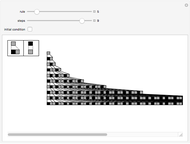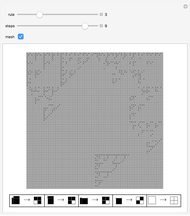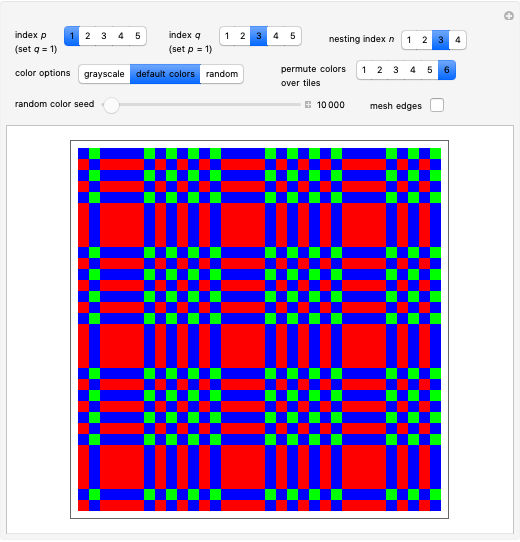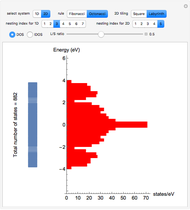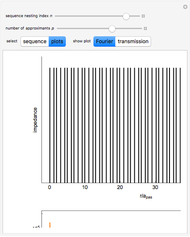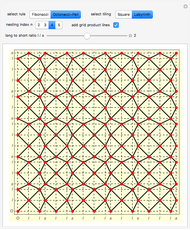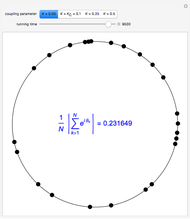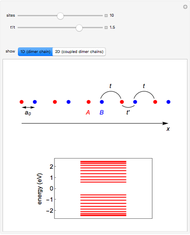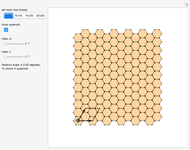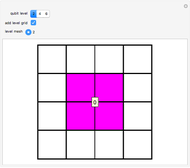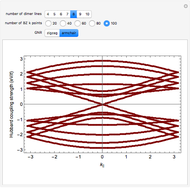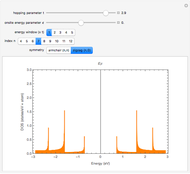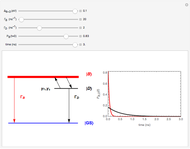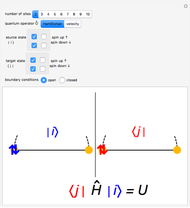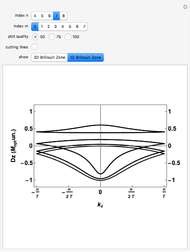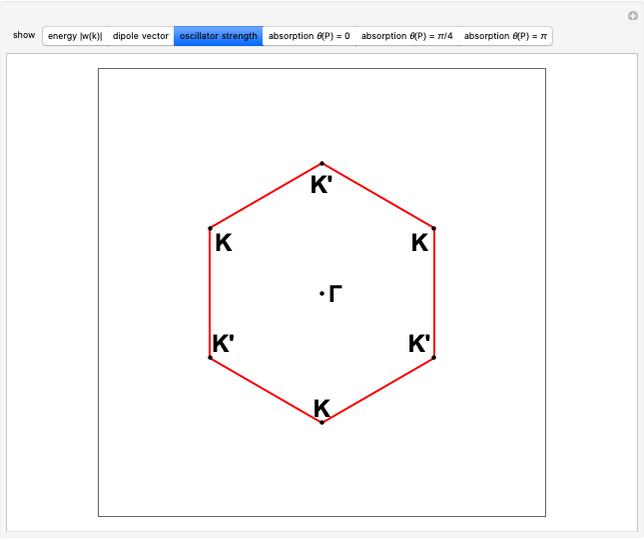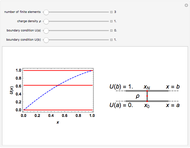Generating 2D Metallic-Mean Quasiperiodic Tilings with NKS Substitution Rules

Requires a Wolfram Notebook System
Interact on desktop, mobile and cloud with the free Wolfram Player or other Wolfram Language products.
This Demonstration shows an alternative, computationally more efficient way of generating the colored two-dimensional (2D) quasiperiodic square tilings reported in [1]. The computation of the tilings in this Demonstration is achieved by using a set of substitution rules on colored squares for the Fibonacci (or golden ratio) system based on A New Kind of Science [2, Notes. Chapter 5: Section 4].
[more]
Contributed by: Jessica Alfonsi (October 2019)
(Padova, Italy)
Open content licensed under CC BY-NC-SA
Details
Snapshot 1: square tiling of a 2D quasiperiodic system obtained from Fibonacci substitution rule ( ), mesh edge highlighting enabled and grayscale set of colors as reported in [2]
), mesh edge highlighting enabled and grayscale set of colors as reported in [2]
Snapshot 2: square tiling of a 2D quasiperiodic system obtained from Fibonacci substitution rule ( ) with nesting index
) with nesting index  and default set of colors
and default set of colors
Snapshot 3: square tiling of a 2D quasicrystal obtained from silver-mean substitution rule ( ) with nesting index
) with nesting index  and default set of colors
and default set of colors
Snapshot 4: square tiling of a 2D quasicrystal obtained from bronze-mean substitution rule ( ) with nesting index
) with nesting index  and random set of colors
and random set of colors
References
[1] J. Alfonsi. "Coloring 2D Metallic-Mean Quasicrystal Tilings with a Mesh-Based Method" from the Wolfram Demonstrations Project—A Wolfram Web Resource. demonstrations.wolfram.com/Coloring2DMetallicMeanQuasicrystalTilingsWithAMeshBasedMetho.
[2] S. Wolfram, A New Kind of Science, Champaign, IL: Wolfram Media, Inc., 2002. www.wolframscience.com/nks/notes-5-4--substitution-systems-based-on-other-shapes (NKS|Online).
[3] V. W. De Spinadel, "The Metallic Means Family and Art," Journal of Applied Mathematics, 3(1), 2010 pp. 53–64. www.aplimat.com/files/Journal_volume_3/Number_1.pdf.
Snapshots
Permanent Citation
























